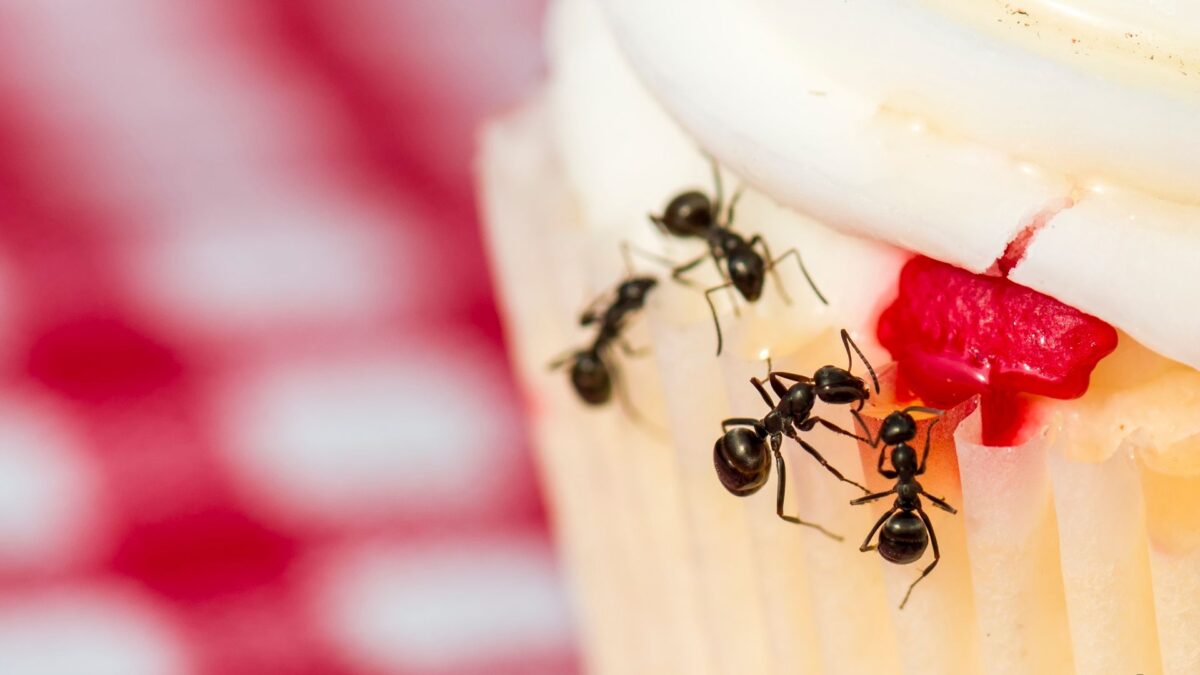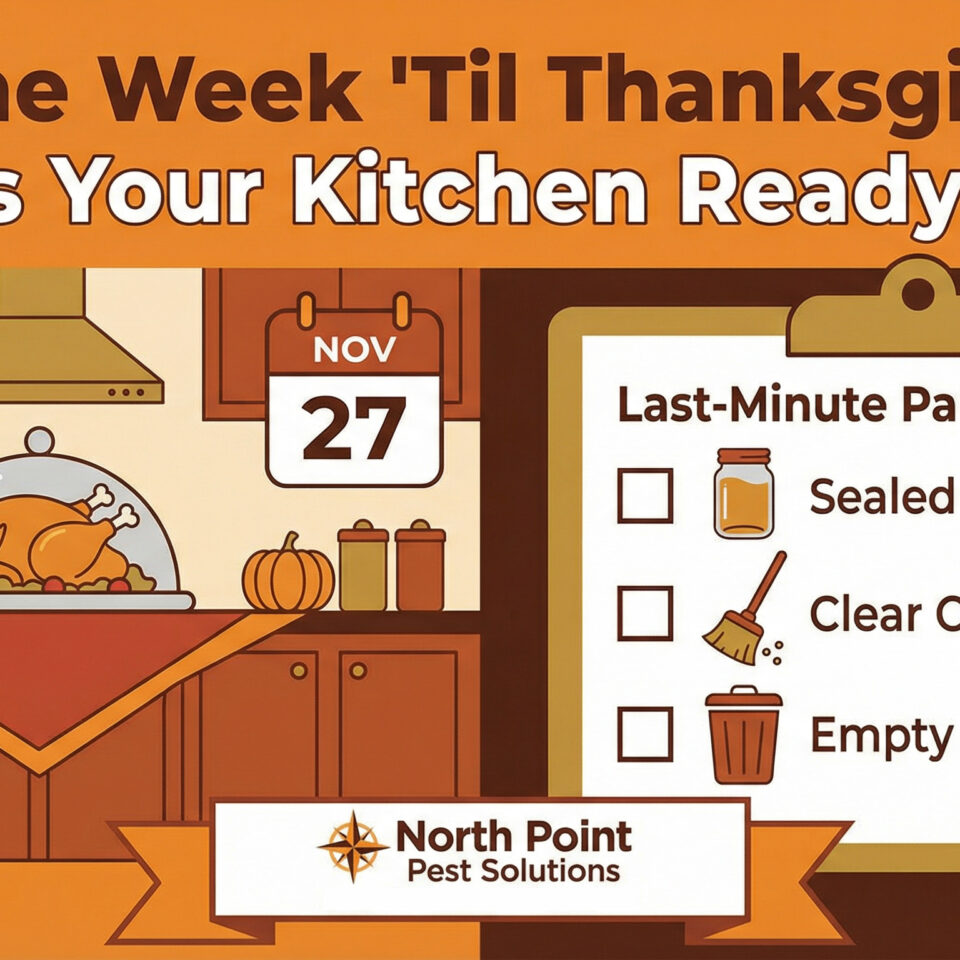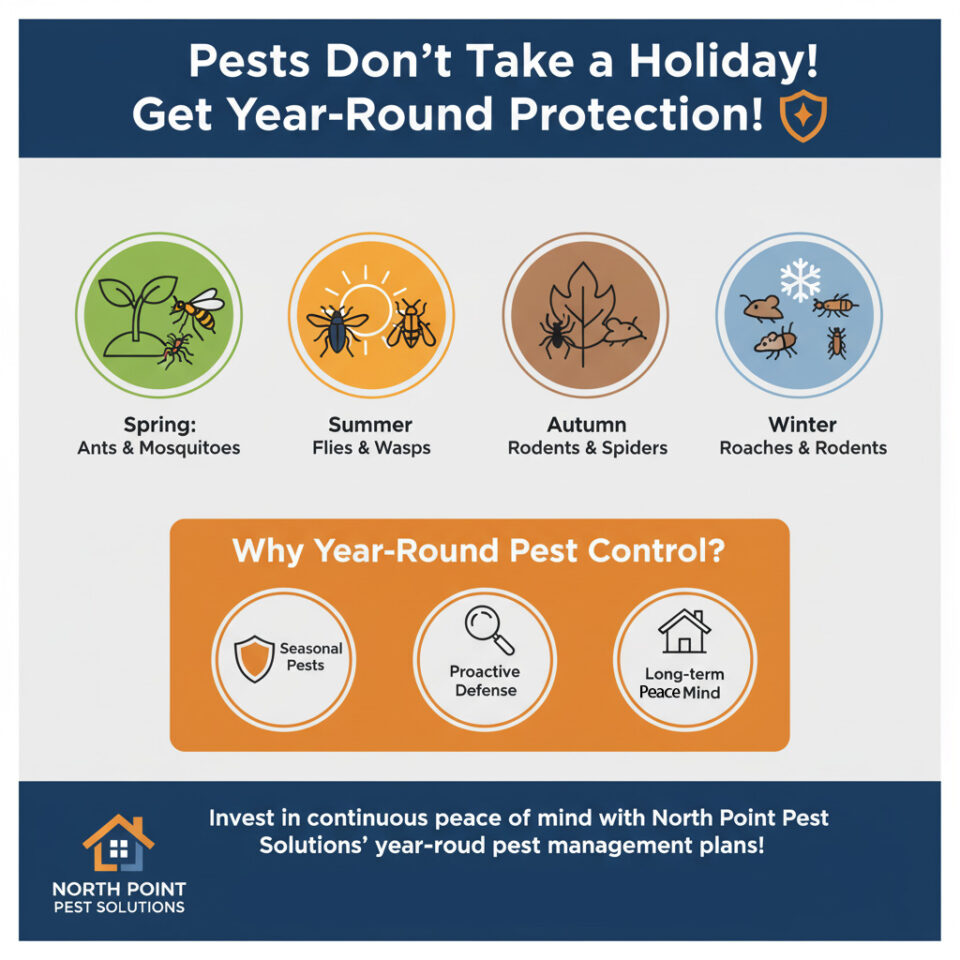Welcome back to Pest of the Week! For the past few weeks, we’ve been tackling common critters causing chaos in our gardens. But as the weather warms and windows open, sometimes those outdoor pests (and their specialized indoor cousins) decide our homes look pretty inviting too! So today, we’re shifting our focus indoors to one of the most persistent and annoying invaders: Ants.
Who hasn’t walked into their kitchen to find a determined line of tiny foragers making a beeline for a stray crumb or a sticky spot on the counter?
Meet the Ant: Tiny Titans of Invasion
Ants are social insects, living in colonies that can range from a few dozen to millions of individuals. The ones you typically see marching through your house are worker ants, tasked with finding food and water for their colony. In the North Bay and much of California, the Argentine ant is a particularly common invader. These are small (about 1/8 inch long), uniformly dull brown or black ants that travel in well-defined trails.
Other ants can also make their way indoors, but the strategies for dealing with them often overlap.
Why Are They Marching In? What Attracts Them?
Ants venture into our homes for the same reasons any creature seeks shelter: food, water, and sometimes, refuge from harsh outdoor conditions.
- Food Sources: Even the tiniest crumbs can be a feast for an ant scout. Spilled sugar, sticky residues, pet food left out, unsealed food packages in the pantry – these are all open invitations.
- Water Sources: Leaky pipes, damp sponges, pet water bowls, or even condensation around windows can attract thirsty ants, especially during dry spells.
- Easy Access: Ants are masters at finding entry points – tiny cracks in the foundation, gaps around windows and doors, spaces where utility lines enter the house.
The Problem with Indoor Ants
While most common household ants like the Argentine ant are primarily a nuisance, their presence can cause:
- Food Contamination: Ants crawling over food or food preparation surfaces can transfer germs.
- Annoyance Factor: Let’s be honest, it’s just plain frustrating to constantly find them on your counters, in your cupboards, or even in your sugar bowl!
- Potential for Bites/Stings: While Argentine ants don’t have a painful sting (they can bite, but it’s usually not very noticeable), other ant species that might occasionally wander in could deliver a more unpleasant nip.
Why Now? The Late May Ant Invasion
As temperatures rise in late May, ant colonies outdoors become more active and their populations grow. They are actively foraging, and our homes can become prime targets. More open windows and doors for ventilation can also provide easier entry points. Sometimes, changes in outdoor weather (like a sudden heatwave or a rare late spring rain) can also drive them indoors seeking more favorable conditions.
Taking Back Your Home: Ant Management & Prevention
The key to controlling ants indoors is an Integrated Pest Management (IPM) approach focusing on sanitation, exclusion, and targeted control:
- Sanitation is Paramount:
- Clean Up Immediately: Wipe up spills and crumbs promptly from counters, floors, and tables.
- Store Food Wisely: Keep food, especially sugary items, in airtight containers.
- Manage Pet Food: Don’t leave pet food out for extended periods. Clean pet bowls regularly.
- Take Out the Trash: Empty kitchen trash cans daily and ensure outdoor bins are sealed.
- Rinse Recyclables: Ants are attracted to sweet residues in unrinsed cans and bottles.
- Exclusion – Seal Them Out:
- Inspect the exterior and interior of your home for cracks and crevices around baseboards, pipes, wires, windows, and doors. Seal these openings with caulk.
- Ensure window screens are in good repair and that weather stripping around doors forms a good seal.
- Eliminate Water Sources:
- Fix leaky faucets and pipes.
- Don’t leave standing water in sinks or on counters.
- Ensure areas under sinks are dry.
- Targeted Control (When Needed):
- Wipe Up Trails: If you see an ant trail, wipe it up with soapy water or a vinegar-water solution. This removes the pheromone trail that other ants follow.
- Ant Baits: These are generally the most effective long-term solution. Worker ants carry the slow-acting toxic bait (often boric acid-based for sweet-eating ants like Argentines) back to the nest, eventually eliminating the colony, including the queen.
- Place baits along known ant trails, but out of reach of children and pets.
- Be patient; it can take days or even a couple of weeks for baits to be fully effective. Resist the urge to spray ants near the bait, as you want them to take it back to the nest.
- Avoid Repellent Sprays Indoors (Initially): While killing ants on contact, these sprays don’t address the colony and can sometimes cause “budding” in certain ant species, where the colony scatters and forms multiple new colonies, making the problem worse.
- When to Call a Professional: If you have persistent, large-scale infestations, or if you suspect you might be dealing with a more destructive species (like carpenter ants, though less common as just “kitchen invaders”), it might be time to call a pest control professional.
Ant Agitations in Your Abode?
Are ants a common uninvited guest in your home this spring? What are your tried-and-true methods for keeping them out or dealing with them when they appear? Share your tips and frustrations in the comments below!






